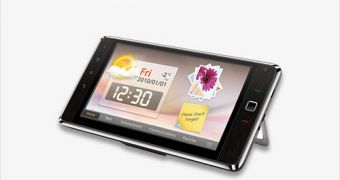Huawei is one of those companies that want to make a name for themselves on the tablet market, and it looks like it decided to use a certain chip solution that is not exactly easy commonly found in this segment at present, one made by Synaptics.
So far, the majority of tablets besides the Apple iPad have used the NVIDIA Tegra 2 SoC (system-on-chip), based on the ARM architecture.
It is not clear just what platform Huawei's IDEOS S7 Slim uses, but some other details have been made public.
One of them was the subject of a press release issued by Synaptics, whose ClearPad 7010 single-chip solution was adopted.
Basically, 7010 is responsible for the touchscreen performance of the 7-inch capacitive screen, providing intuitiveness, accuracy and responsiveness.
There are also power consumption benefits, in addition to faster finger tracking (60 Hz report rate) and the ability to track up to five fingers at any given time.
"Huawei's IDEOS S7 Slim tablet has a sleek, high-performance touchscreen that's the ideal companion device for users on the go," said Kevin Barber, senior vice president and general manager of the Handheld Division at Synaptics.
"The ClearPad Series 7 Portfolio combined with Synaptics system design expertise enables a new class of large touchscreen devices that respond naturally to your touch."
For those that want info on the actual product, what is known is that it has a thickness of 12.5 mm, HD media with 720p HD playback support, multi-tasking, a 3.2 megapixel rear camera and the Android 2.2 OS, all in a package weighing 400 grams. It should start selling in April.
"The S7 Slim delivers a rich mobile user experience for watching video, gaming, viewing pictures, and browsing the Web," said Wang Yin Feng, director of the home device product line at Huawei.
"Synaptics' technology delivers the enhanced touch performance required to bring this portable media experience to life."

 14 DAY TRIAL //
14 DAY TRIAL //